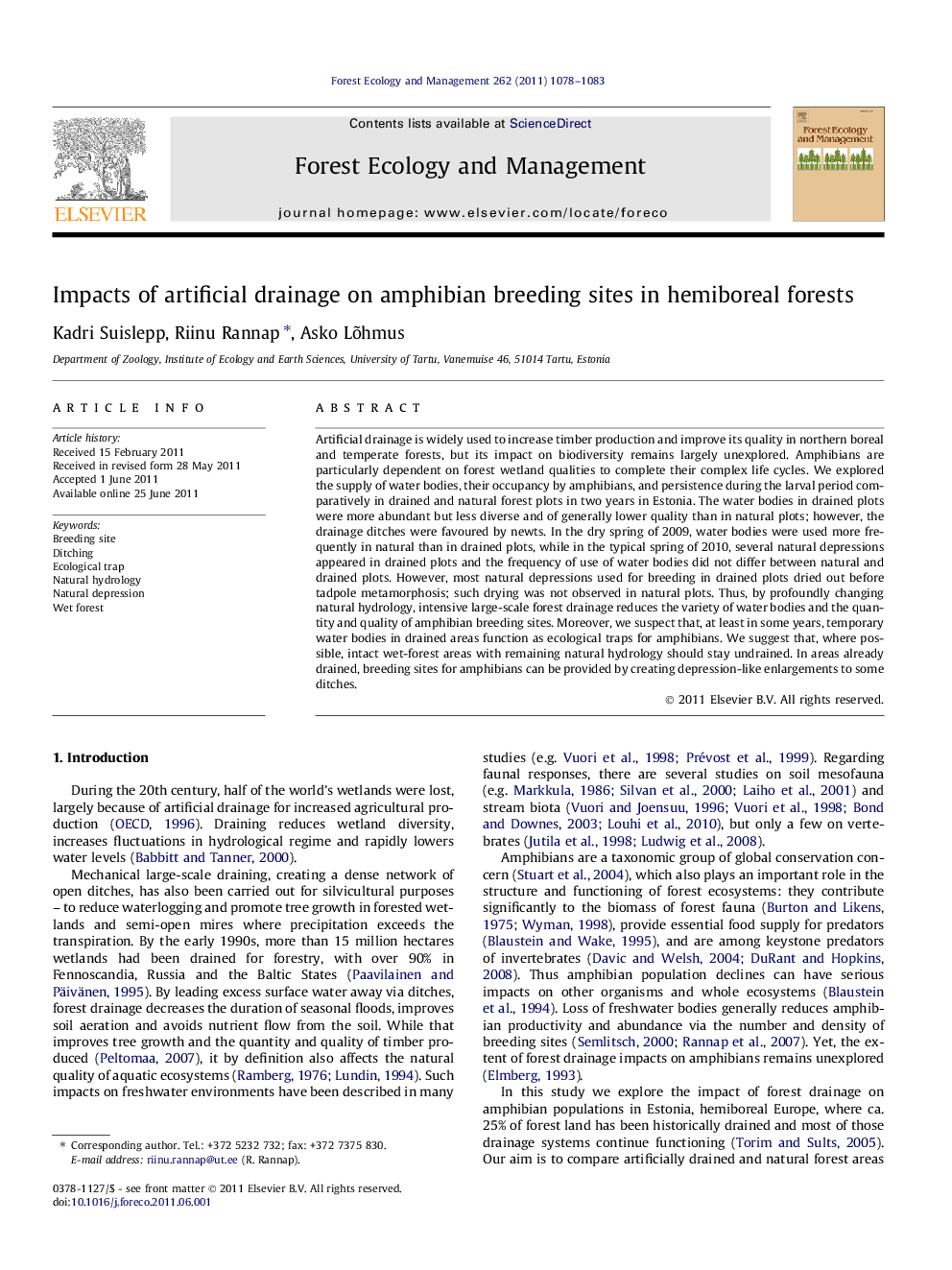| کد مقاله | کد نشریه | سال انتشار | مقاله انگلیسی | نسخه تمام متن |
|---|---|---|---|---|
| 87851 | 159269 | 2011 | 6 صفحه PDF | دانلود رایگان |

Artificial drainage is widely used to increase timber production and improve its quality in northern boreal and temperate forests, but its impact on biodiversity remains largely unexplored. Amphibians are particularly dependent on forest wetland qualities to complete their complex life cycles. We explored the supply of water bodies, their occupancy by amphibians, and persistence during the larval period comparatively in drained and natural forest plots in two years in Estonia. The water bodies in drained plots were more abundant but less diverse and of generally lower quality than in natural plots; however, the drainage ditches were favoured by newts. In the dry spring of 2009, water bodies were used more frequently in natural than in drained plots, while in the typical spring of 2010, several natural depressions appeared in drained plots and the frequency of use of water bodies did not differ between natural and drained plots. However, most natural depressions used for breeding in drained plots dried out before tadpole metamorphosis; such drying was not observed in natural plots. Thus, by profoundly changing natural hydrology, intensive large-scale forest drainage reduces the variety of water bodies and the quantity and quality of amphibian breeding sites. Moreover, we suspect that, at least in some years, temporary water bodies in drained areas function as ecological traps for amphibians. We suggest that, where possible, intact wet-forest areas with remaining natural hydrology should stay undrained. In areas already drained, breeding sites for amphibians can be provided by creating depression-like enlargements to some ditches.
► Intensive forest drainage reduced diversity, not abundance, of small water bodies.
► Drainage created shallower water bodies with steeper slopes avoided by amphibians.
► Due to earlier drying, drained areas may become ecological traps for amphibians.
► However, deep drainage ditches can provide quality habitat for newts.
Journal: Forest Ecology and Management - Volume 262, Issue 6, 15 September 2011, Pages 1078–1083